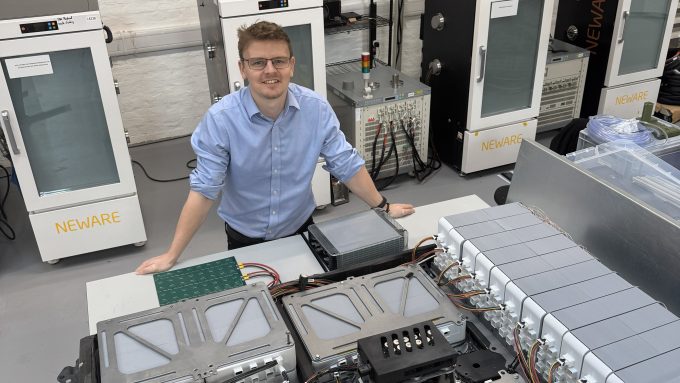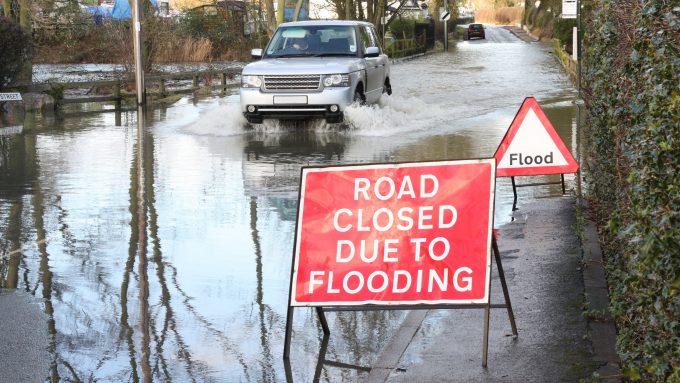
Innovation Brief: Post-Pandemic Wellbeing

Wellbeing in the age of COVID-19
In this chapter of the Innovation Brief, we look at the place-based services and systems which enable human flourishing – from health, social care and community services to wider environmental factors.
Clearly COVID-19 has been a public health crisis on an unprecedented scale. In this chapter we focus less on the immediate physical health impacts of the virus itself – areas which have been widely discussed by those with extensive expertise – and instead look at the impact of the pandemic on wider health and wellbeing. In short, how has the crisis affected our collective ability to live healthy and fulfilled lives?
We look at these impacts and the emerging opportunities through the lens of three time horizons:
- Right now – the current situation and the emergency response. The virus and attendant mitigation measures have proved a psychological shock to many and made traditional support mechanisms impossible. What alternatives can we implement immediately?
- What next? – the transitional restart for issues relating to wellbeing in the post-lockdown, pre-vaccine period. What are the opportunities to capitalise on and sustain the upswing in ‘active mobility’ modes (walking, cycling etc)?
- Beyond recovery – a look further into the future ahead in this area.
Mental Health Impacts and Opportunities
The pandemic has had a highly detrimental impact on mental health across Europe, with the proportion of people reporting that they feel depressed doubling from 6-13% since the outbreak. This is unsurprising, given the wide-ranging limitations on people’s daily lives, anxiety about their health, economic uncertainty, and the difficulty in staying close to friends and family because of physical-distancing rules.
These impacts are not spread evenly, with already vulnerable groups being disproportionately affected. According to Age UK, nearly a third of people aged 65 and over live alone in the UK, and 1.4 million older people regard themselves as ‘often lonely’. Enforced segregation and separation has led to a deterioration in their mental health – more than half of over 60s reported a decline.
Access to green space for exercise is an important element of addressing mental health issues, (as we discuss in Public Space chapter of this Innovation Brief). This is feasible for people who aren’t self-isolating, but other ways of supporting those who suffer from mental health issues such as loneliness, anxiety or depression naturally rely on ‘in person’ interventions. These are impossible in a socially distanced world – there is no such thing as a distanced hug (or is there?) Tele-mental health services which had seen relatively slow uptake prior to COVID-19 are playing a role in filling this gap. With challenges around client confidentiality, data security and maintaining boundaries in virtual ‘home’ consultations, we need innovative solutions. As with other forms of digital service, the acute phase of COVID-19 is both stimulating demand and highlighting improvement areas – increasing the potential market for innovative new products. In the longer term, perhaps there is even a role for robots in our care support system.
Innovation in service design and working arrangements
Beyond tele-health services for acute conditions, the pandemic has highlighted a more general need for thoughtful service & policy design to support people. Employers are struggling to operate with a workforce which has suddenly become largely ‘remote’. Working from home means juggling living, work and sometimes home-schooling in a space not designed for it. Forward thinking employers have rapidly adjusted policies to provide flexibility and avoid over-burdening staff, risking burn-out. Given that flexible working generally shows many benefits from productivity to retention, many employers will maintain these policies once lockdown lifts. The scale on which this might be maintained suggests opportunities for businesses offering to ‘kit out’ home offices and certify their safety; enabling employers to fulfil their duties of care.
Supermarkets and other food retailers have also reacted quickly. Firstly, by tapping into impressively resilient supply chains to keep stocks on shelves – and subsequently by innovating store layout, signage and opening hours to prioritise access for key workers and vulnerable people. As well as being inherently the right thing to do, these businesses will benefit from positive brand associations. The importance of fairness and social solidarity have heightened during the crisis.
https://youtu.be/ppPLDEi82lgIn this video, the FT looks at how Japan is looking into robotic solutions to look after its ageing population.
Physical fitness is a critical component of both physical and mental wellbeing. As we discussed in the Mobility chapter of this Innovation Brief, the pandemic has led to changes designed to avoid over-burdening public transport systems and encourage active and micro-mobility. There has been a surge in purchases of bikes – the sector saw a 60% increase in sales in the UK in April. In addition, apps which allow people to track their progress in their chosen forms of exercise have also seen a significant increase in downloads in Q2 this year.
More Britons have developed a taste for active mobility (cycling, running and other modes) during lockdown. Fear of contagion on cramped public transport, will encourage people to continue with these forms of exercise after lockdown eases.
There will be opportunities associated with this increased activity. As mask-wearing becomes mandatory in many areas of life, pollution-filtering masks designed for cyclists may find new markets. For example the mask developed by Airhead, a start-up CPC is supporting as part of our Innovating for Clean Air programme. As ‘quantified self’ apps are used more and more, interesting business models will open up which leverage the underlying data. Using this data to add more granularity to our understanding of the flows of people in and between these places will also support better modelling and decisions on infrastructure investments.
Finally, as the market for active mobility solutions grows, it will also become more differentiated. There may be a growing opportunity for e-bike solutions for those in hilly areas, with health conditions or a fear of sweat – or kits which ‘retro-fit’ existing pedal cycles such as Swytch. Stereotypical groups users such as ‘MAMILS’ (middle aged men in Lycra) will give way to a wider array of user segments, with different wants, needs and price sensitivity.
Improved Air Quality
Striking images from across the globe have shown how the air has become cleaner since countries put stringent restrictions on movement. Since lockdown started, some urban areas have seen levels of Nitrogen Oxides (NOx) drop by 30-40%. With significantly fewer people driving and taking flights and cruises, and most commercial and industrial units shut, the pandemic has proved to be an ‘accidental experiment’ to understand the effects of such shutdowns on pollution levels.
As people have experienced the steep change in air quality, they don’t want to revert to the polluted past. In a recent YouGov poll, 76% of Londoners agreed with the statement “During the lockdown, I have sensed/experienced good clean air and I don’t want to go back to the air pollution levels we previously had”.
Some cities are already embracing these opportunities. For instance, the West Midlands has pioneered the installation of 5G air quality and traffic sensors on some of its road junctions. The data generated will be used with an augmented reality phone app that will enable people to visualise concentrations of particulate matter around them in creative ways. There are also opportunities in a range of other areas. We discuss active mobility opportunities in other briefs. The transition to electric vehicles will reduce emissions, but tyre and brake dust are significant contributors to particulate pollution – another area ripe for innovative solutions.
Conditional Bailouts
Governments have a rare chance to use the leverage of bail-out and financial support to introduce ‘green’ reforms that improve air quality and mitigate climate change.
The French government has already set a precedent. It has approved a €7bn (£6.15bn) loan to the troubled Air France, contingent on the carrier scrapping some domestic flights to reduce its emissions. The Austrian government has indicated similar moves. The EU has earmarked 25% of its €750 billion COVID recovery fund for climate action. It has also adopted a sustainable finance taxonomy to guide its spending. The taxonomy will direct private investments into technologies that further at least one of six pre-defined environmental objectives, such as climate change mitigation.
As we have highlighted in other briefs – the emerging consensus about post-pandemic stimulus spending is to support a green recovery. Innovations that support this have good growth opportunities.
Neuroscience in Built Environment
As we rethink our buildings’ designs and public space allocations (as discussed in the Built Environment and Public Space chapters of this Innovation Brief), new developments in neuroscience provide guidance into how design decisions can be made to maximise wellbeing, using insights into how our brains process information.
Measuring our brain responses to varying situations and applying this knowledge to the design of verbal and visual signposting of our environments can play a key role in embedding empathetic awareness among people. For instance, the Design Council’s work on providing better signage and information in hospitals has already shown a significant reduction in the levels of patient frustration and aggression in one hospital in Southampton.
In view of these emerging opportunities, Connected Places Catapult recently reissued a playbook, Neuroscience for Cities, which further provides a framework of how neuroscience research can be put into practice in cities and in doing so, outlines a number of opportunities for innovative organisations.
Green Investments
Previous estimates by IPPR have shown that there is currently a £33 billion annual public investment gap between the UK government’s planned investments and its stated goals for decarbonisation and the restoration of nature.
This investment gap represents opportunities for various ‘green’ investments which also deliver against the imperative to support jobs and growth as we reboot much of the economy. Such investments in the first instance can be targeted at job-rich, shovel-ready opportunities that also unlock long-term value. For example, lighting upgrade programs across all government buildings would create regional employment with positive domestic stimulatory impact. They would also deliver long-term savings for taxpayers through reduced electricity bills. Similarly, a program to upgrade inefficient water heating systems across the residential sector would address and reduce the second largest component of electricity bills for households.
Through its public investment and a well-designed policy environment, the government must also seek to maximise investment from the private sector. These investments would have multi-faceted benefits, including cleaner air, lesser carbon emissions and more jobs.
Supporting Wellbeing as we Being to Bounce Back
Living through this pandemic has been a traumatic experience for most and has impacted vulnerable groups more severely. As we transition to a recovery and rebuilding phase, we see multiple opportunities for interventions and innovations to help us live healthier and more fulfilled lives. If you are working on solutions that will enable that future, or if anything in this chapter or the rest of the Innovation Brief has sparked your imagination, we want to hear from you.





